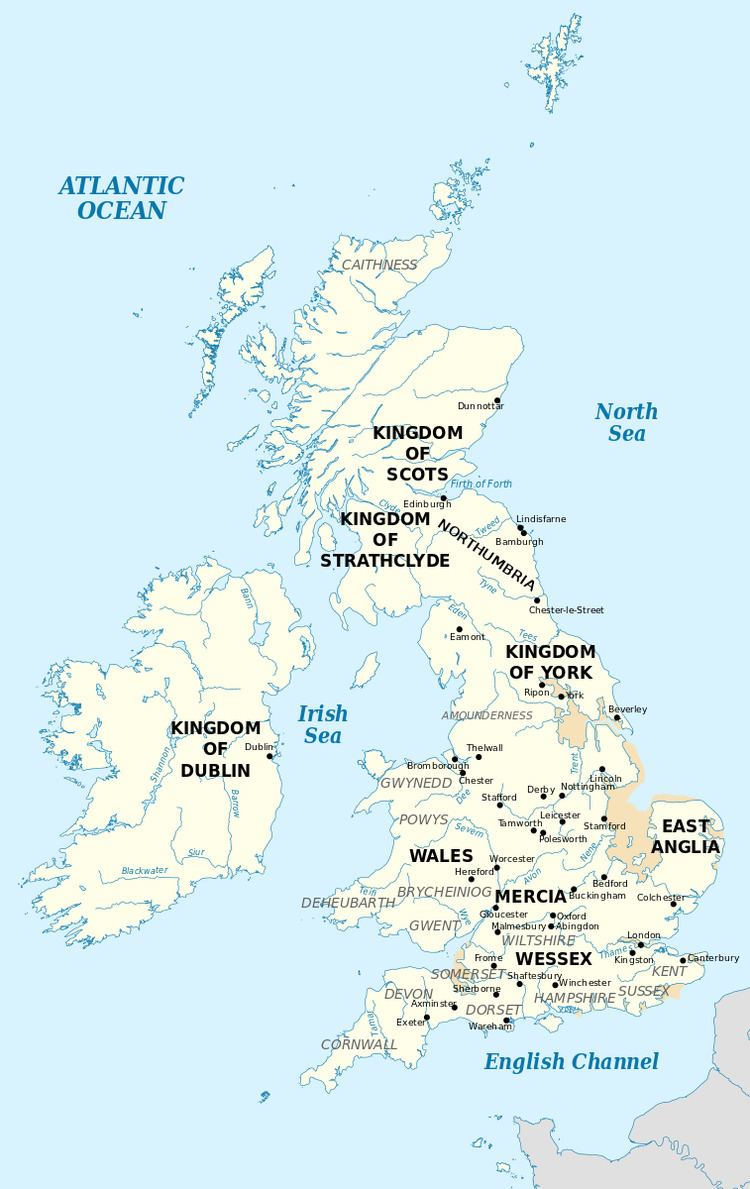 | ||
Æthelwold's Revolt was an attempt by Æthelwold ætheling to seize the throne from Edward the Elder after the death of Alfred the Great. It ended in defeat and death for Æthelwold.
Contents
Background
After Alfred the Great died on 26 October 899, his son, Edward, was expected to succeed him. Edward's cousin Æthelwold, the son of Alfred's older brother King Æthelred I, pressed a competing claim to the throne.
Southern revolt
Æthelwold first move was to take his small force and seize Wimborne, in Dorset, the burial place of Æthelred, his father. He then took control of the crown lands at Christchurch and returned to Wimborne to await Edward's response. Edward assembled an army and moved to Badbury, but Æthelwold refused to meet him in battle. He instead stayed at Wimborne together with his men and a kidnapped nun, seemingly preparing for a long stand-off, although it appears he had the resources for a frontal assault and was preparing to attack when he rode north during the night.
Viking support
Æthelwold arrived in the north soon after he fled from the confrontation at Winborne. He appealed for support from the Danish Vikings of Northumbria and they pledged their allegiance. Coins were minted during the period showing that Æthelwold had been proclaimed king in Jórvík. Meanwhile, Edward was crowned at Kingston upon Thames on 8 June 900.
In the autumn of 901, Æthelwold sailed with a fleet from his new allies into Essex. By 902 he and the East Anglian Danes were attacking deep into Mercia, one of Edward's most important allies, as far as Cricklade, in Wiltshire.
The Battle of Holme
Edward retaliated by ravaging East Anglia and when he retreated, the men of Kent disobeyed the order to retire, meeting the Danes at the Battle of the Holme on 13 December 902. The Danes defeated Edward's troops, but as a result of the battle both Æthelwold and Eohric, the Danish king of East Anglia, were killed.
Aftermath
Edward's position was strengthened as a result of the revolt. With Æthelwold dead, his grip on the throne was assured for the remainder of his reign. The quelling of domestic unrest also allowed him to focus on the Viking settlers. After the death of Eohric and two other Danish leaders, at his decisive victory at Tettenhall, he held a dominant position placed over all his Danish rivals.
